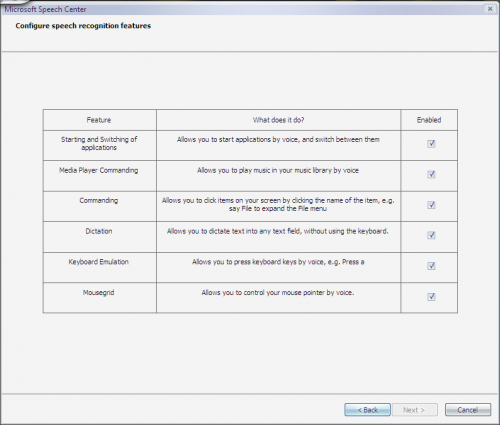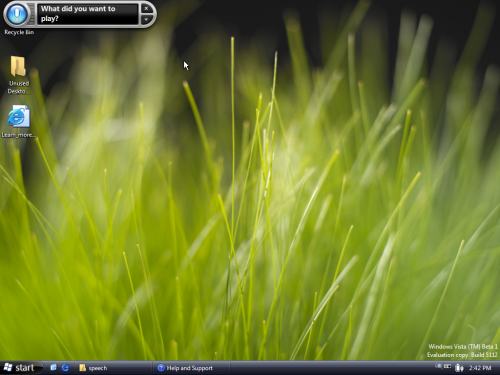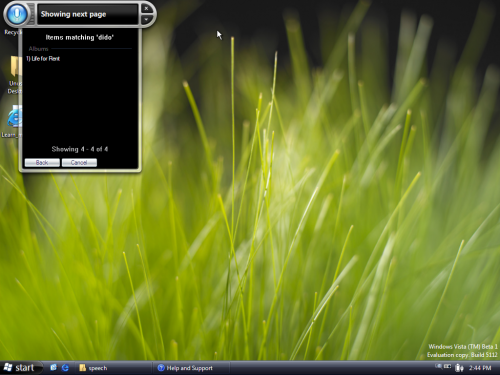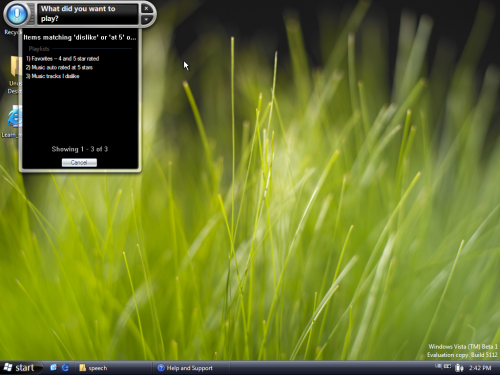
While it might be difficult at first glance to see why one would want to disable commands I think there are several potential benefits:
- Users can tailor Windows Speech Recognition to their specific desires or needs by eliminating unwanted commands;
- Users can eliminate the possibility of inadvertently activating certain commands; and
- Users can increase the performance of the recognizer by disabling commands for which the recognizer listens.

The initial Windows Speech Recognition interface when a command to play an item is issued.

A disambiguation interface for music items was also implemented. In this example the Life for Rent album matches the Dido criteria as she is defined as the artist of that album based on its metadata properties. The above screenshot also illustrates how users could cycle between different pages with different suggestions.

As mentioned before commands were not limited to artists or albums. Users could, for instance, issue a command to play a certain playlist.
The strings of text in SpeechUXRes.dll of Build 5112.winmain beta1.050720-1600 illustrate the following items that could be played:
While I did not test in Build 5112, the strings of text in SpeechUXRes.dll indicate that users could also switch between tracks in an album or those that were recently played; pause tracks; and stop tracks:
- "Artist - Album"
- "Artists"
- "Albums"
- "Playlists"
- "Genres"
Finally, the strings of text also indicate that users could adjust the volume of speakers to their highest levels; increase or decrease the volume by increments; or mute or unmute speakers solely by voice (note that such speech commands are also not available in Windows Vista RTM without the use of a macro):
- "Next track"
- "Pausing music"
- "Previous track"
- "Stopping music"
- "Turning speaker mute on"
- "Turning speaker mute off"
- "Toggling Mute"
- "Increasing the volume"
- "Decreasing the volume"
- "Increasing the volume a little bit"
- "Decreasing the volume a little bit"
- "Increasing volume to max"
